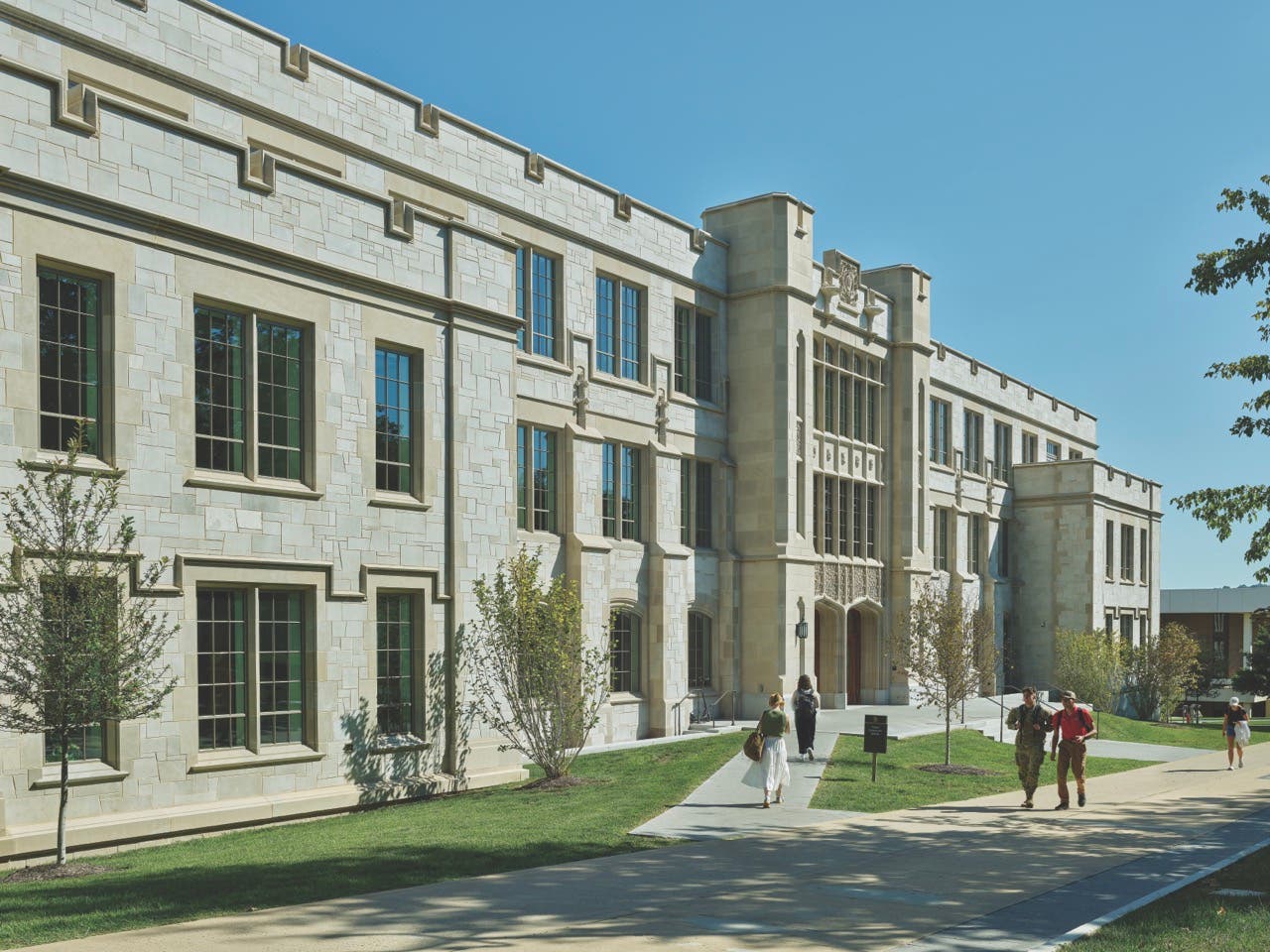
Projects
Room to Grow
As the oldest and most revered component of the learning institution’s original master plan, it is so revered that it typically never is altered. Buildings may be restored and renovated, and occasionally an addition that nods to the past may be allowed admission to this exclusive limestone and red-brick fraternity.
But at the University of Arkansas, which is based in Fayetteville, there arose a rare opportunity to add a new building in what the teams at HBRA Architects and Core Architects, collaborators on the project, call “a missing tooth” in the century-old master plan by Jamieson & Spearl.
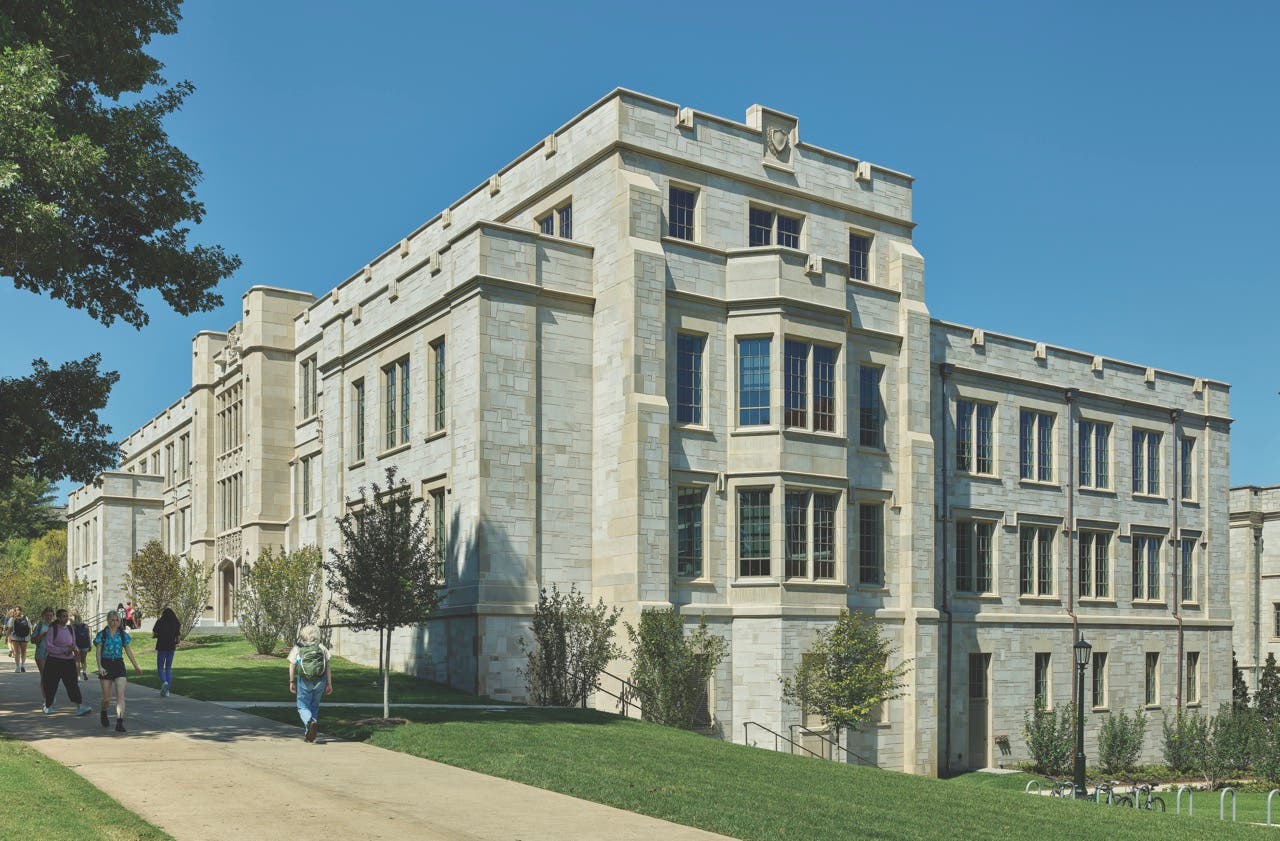

The resulting Cordia Harrington Center for Excellence, which has tutoring and mentoring spaces, multi-use lounges, classrooms, conference rooms, and faculty offices, is the first new building on the quad since the 1970s. What’s more, it’s on prime quad space: It’s sited right next to Old Main, the 150-year-old university’s first and most recognizable building.
Inspired by the 1925 master plan and the surrounding buildings, the architectural teams, with HBRA as design architect and Core as architect of record, created a monumental four-story building that so sublimely straddles the two centuries that it looks as though it has always been there.
“The university didn’t want a dark, heavy building,” says Michael Baldwin, lead architect for Core. “Cost, of course, was an issue, and it had to be welcoming to students.”
The result is what William Mahalko, project architect for HBRA, calls “a rational and regular plan but that’s very complex in 3D.”
There was much discussion about the design of the central tower and its pair of bifurcated doors, which strike just the right balance between entry and massing. Large, expansive banks of windows lighten the facade and interior spaces without sacrificing historical character.
The crowning cartouche, which features the shield of the university in the center, picks up design elements that were copied from its quad mates. Scans by the stone mason allowed exact replications.
Part of the reason the Cordia Harrington Center for Excellence, which took two years to construct, fits in so well with its historic colleagues is that it’s infilled with Batesville limestone from the same quarry as that on the facades of the other quad buildings. Its Indiana limestone trim is another tie-in to the past and its neighbors.
“The student success center is a new program that advises, mentors, and tutors those who transition to careers or further postsecondary education,” Mahalko says. “The university wanted to put all these programs, which were spread out in various buildings on campus, under one roof.”
The challenge, adds Baldwin, was to create a building that looked as though it had been built a century ago but that has modern systems that meet the needs of and engage 21st-century students.
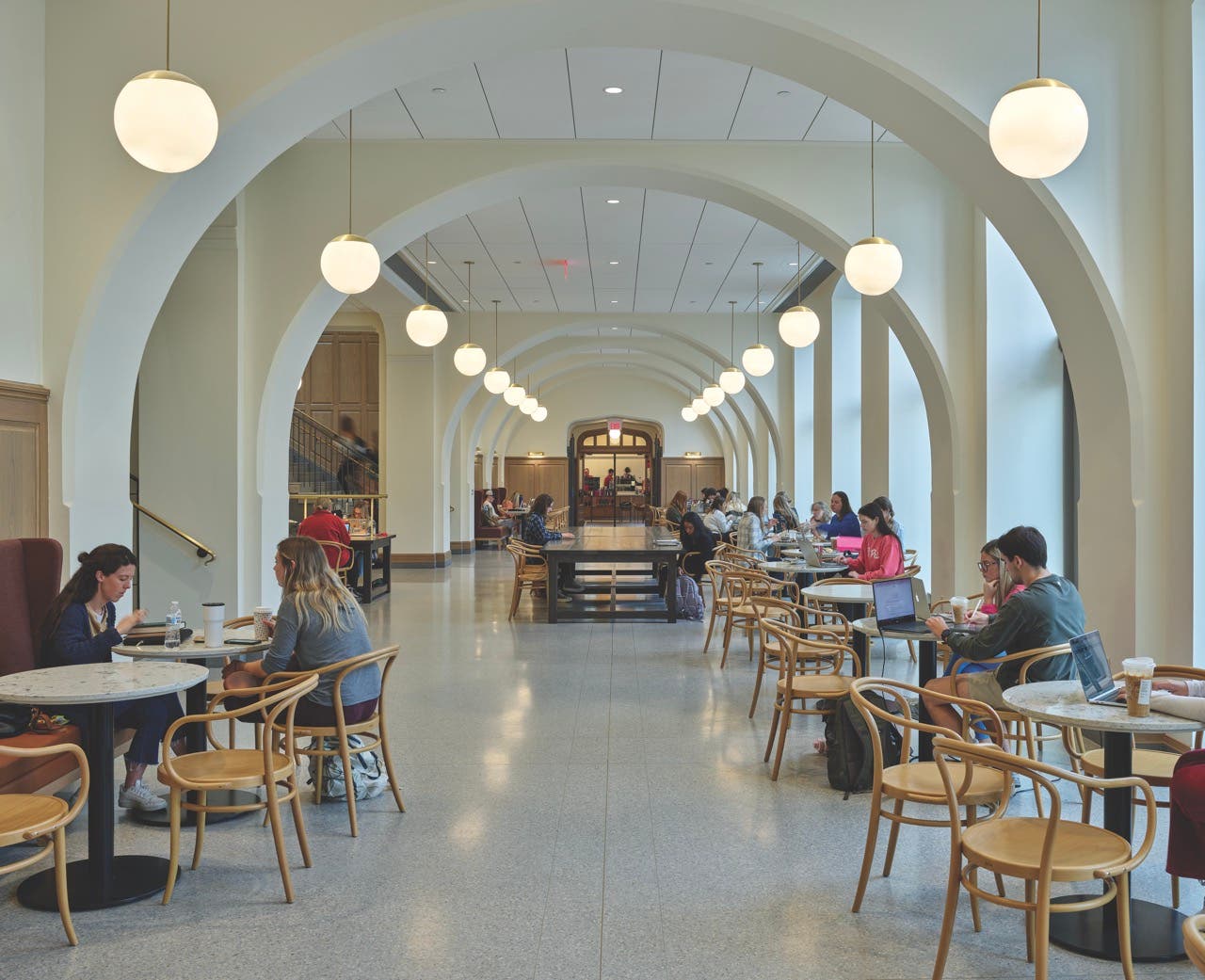
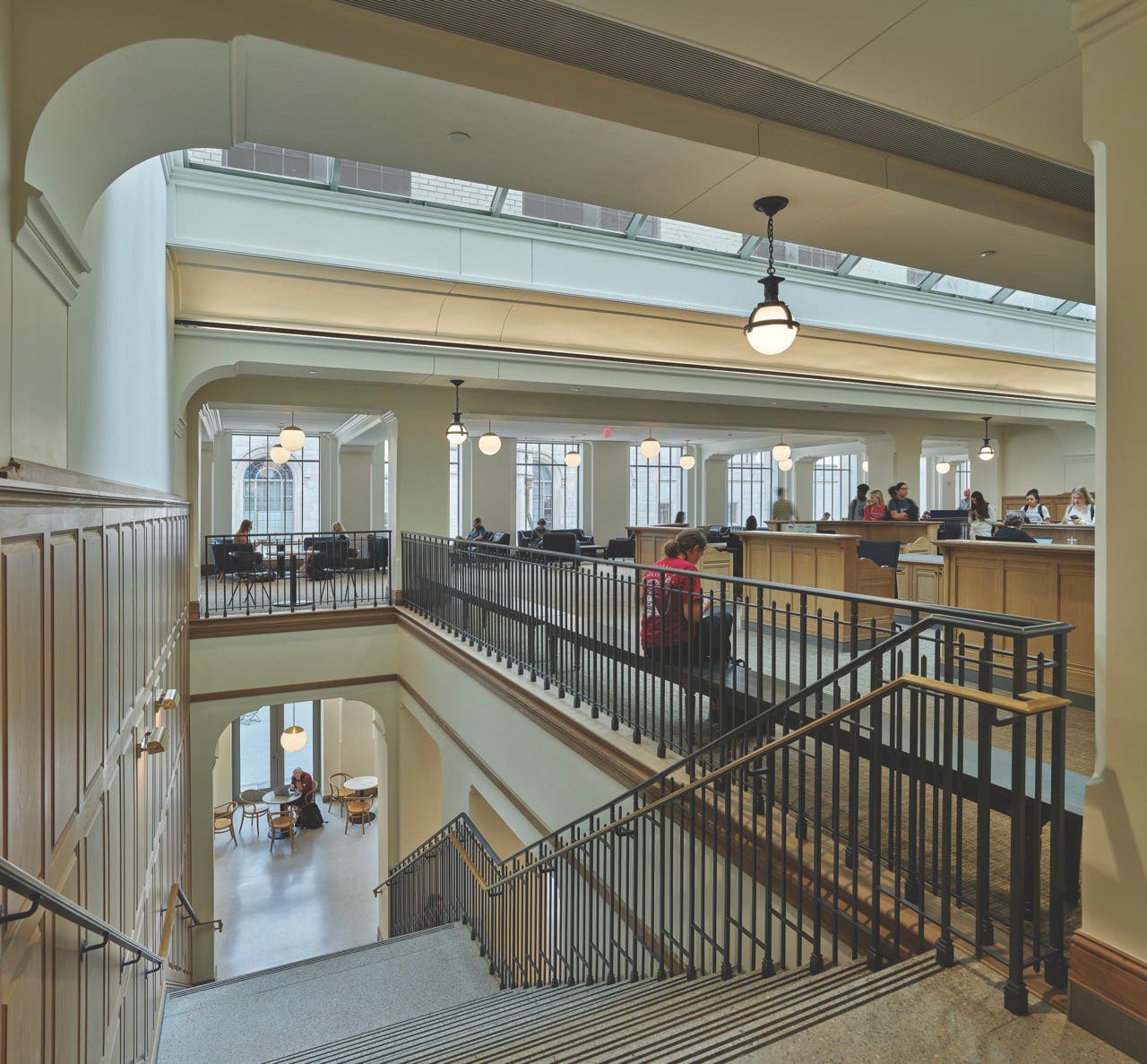
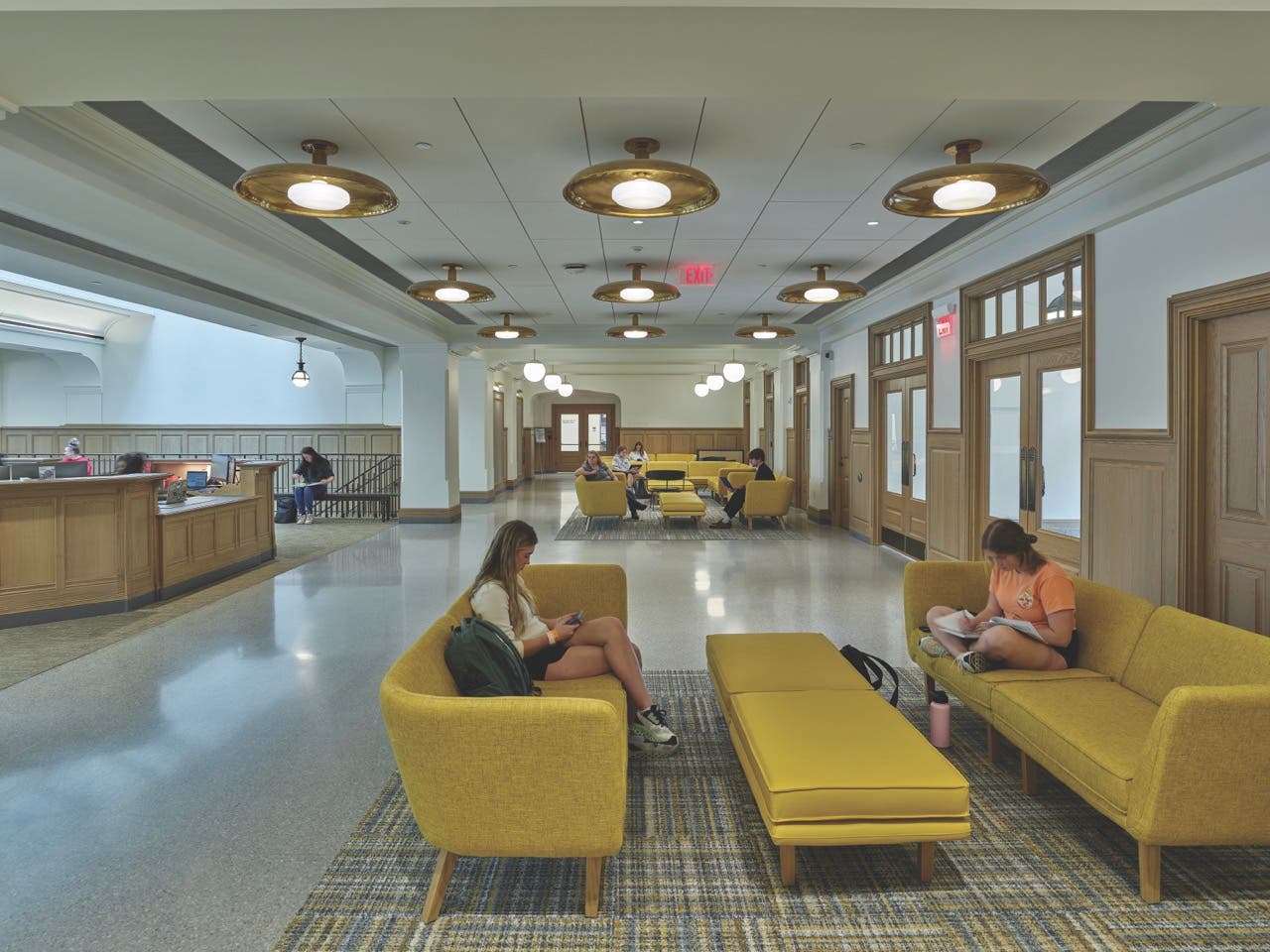
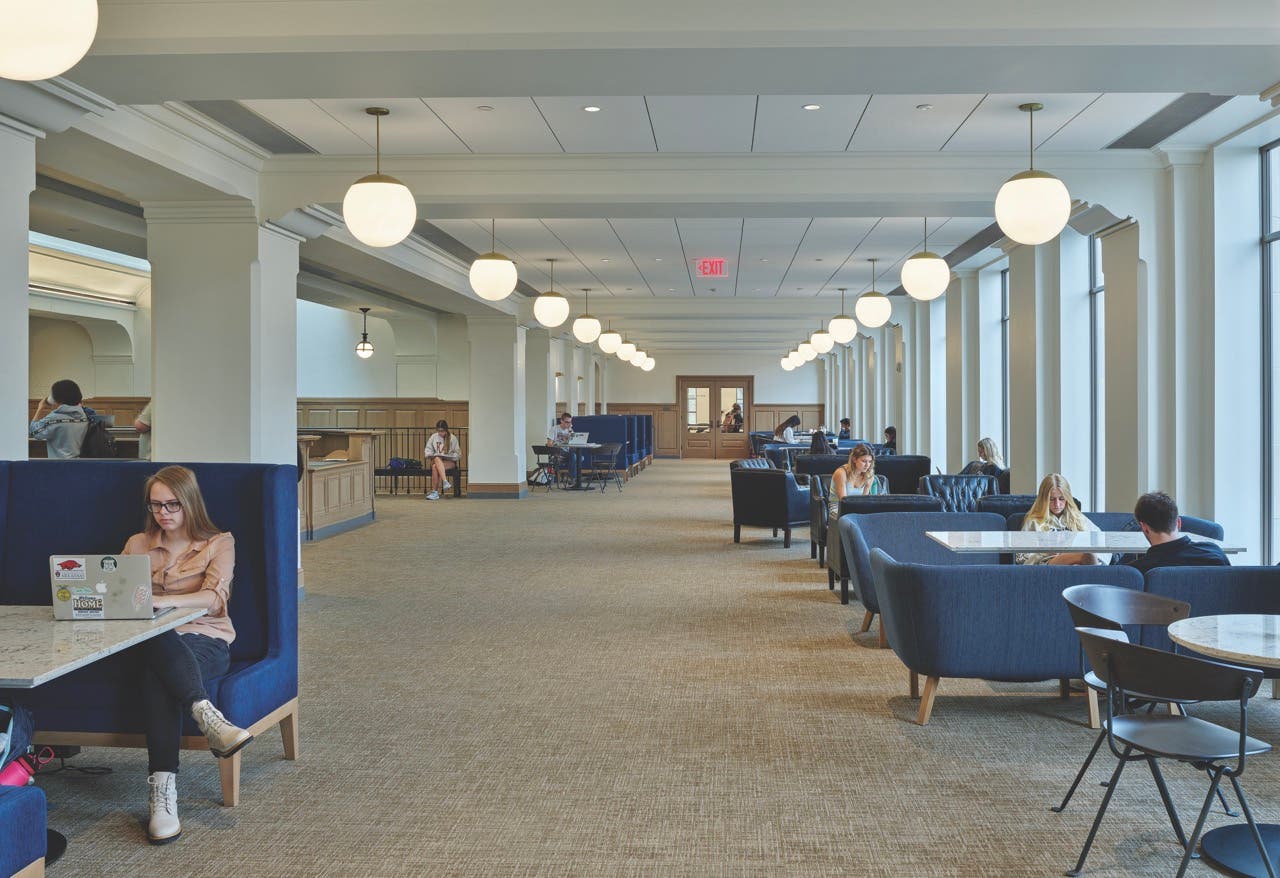
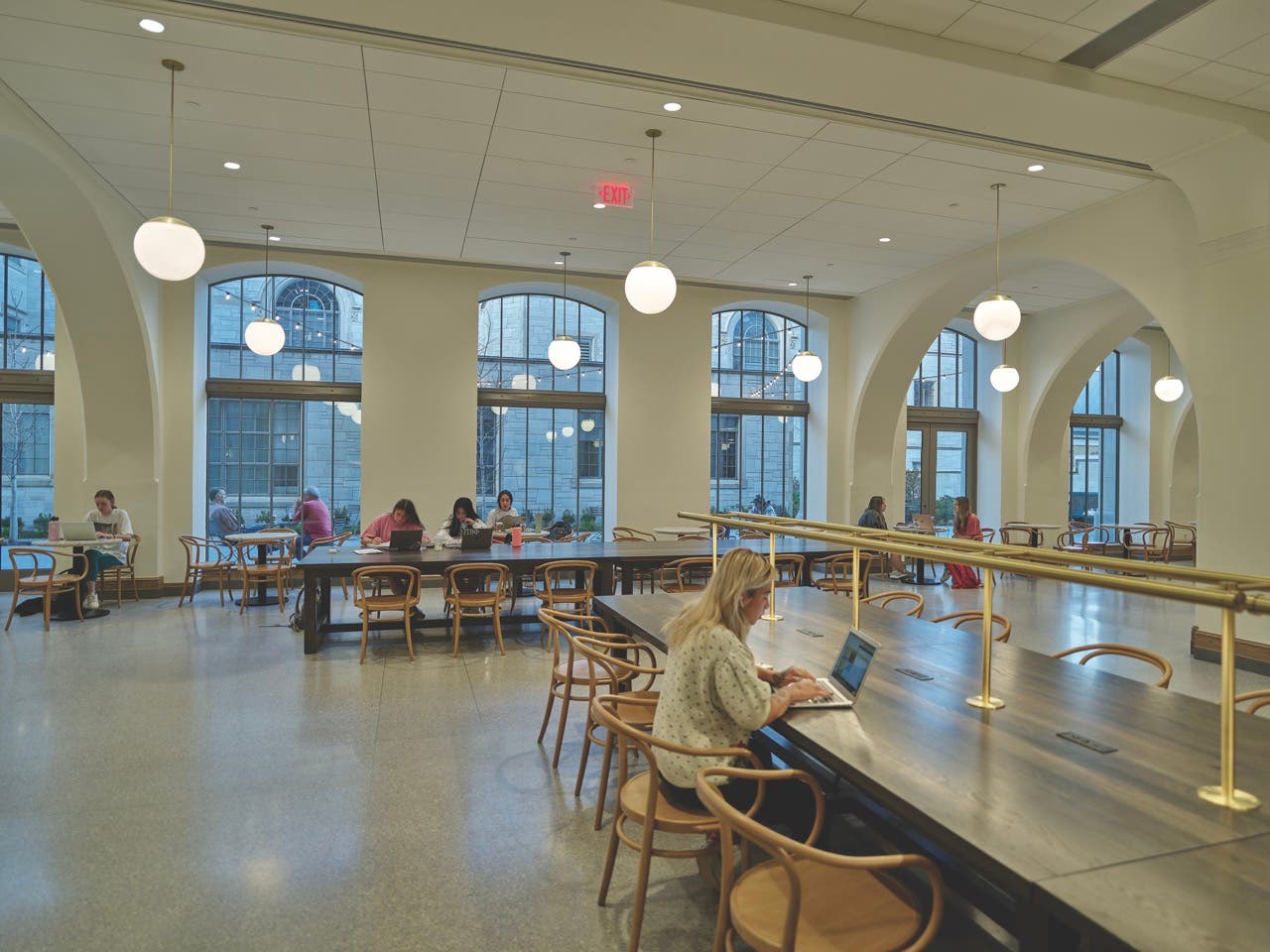
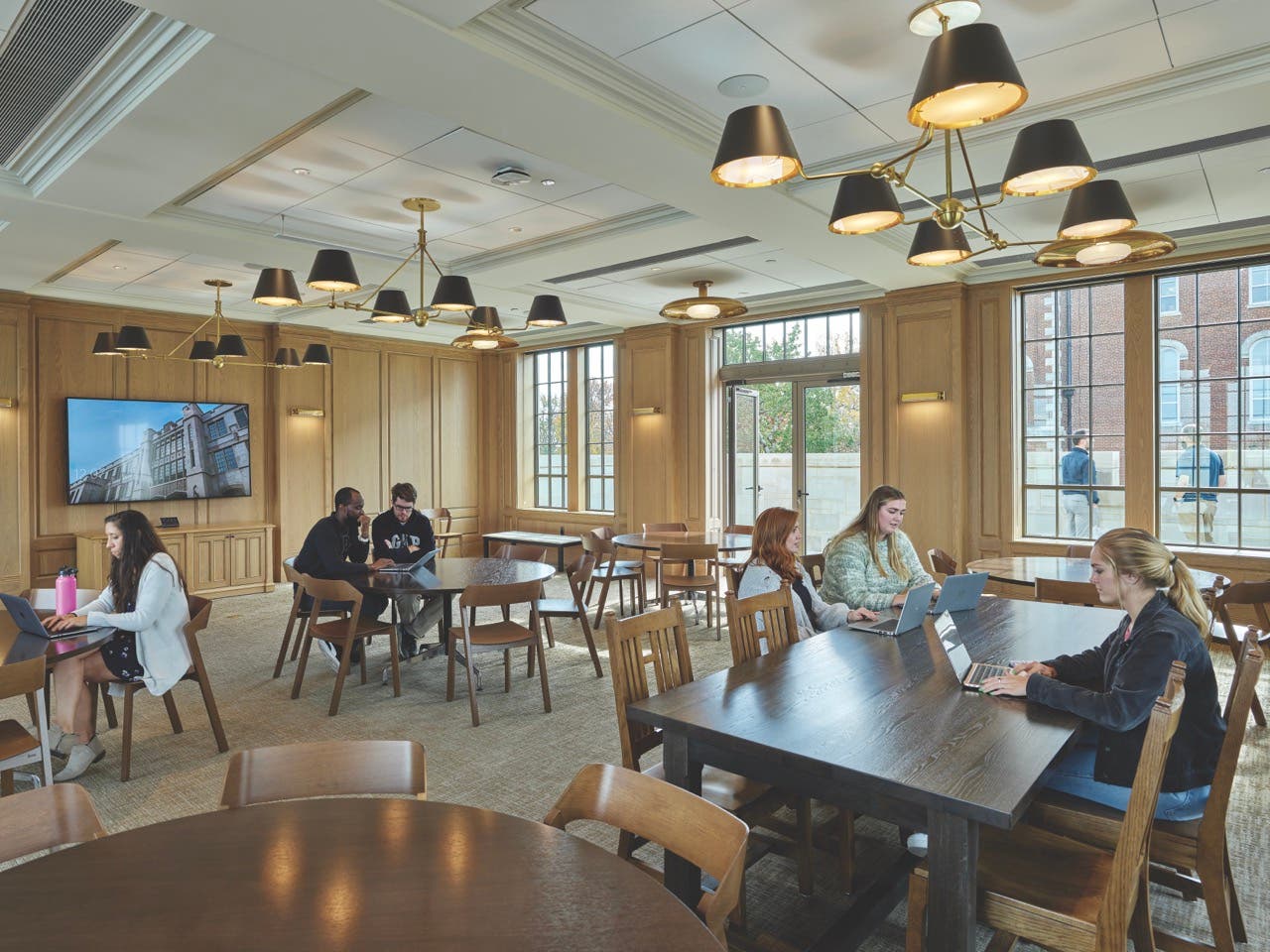
The center’s spaces are organized around a central skylight that welcomes students with an abundance of natural light that gives the building interior a contemporary feel.
The spaces are designed to be reconfigured for various uses. The interior comprises an open lobby and wings. Office tutoring and collaboration spaces for various departments are grouped into studios with informal furnishings and open ceilings.
The third-floor seminar room, for example, is designed for lectures or independent study but has all the technology needed to convert it into a regular classroom as needed.
Some of the building’s most popular features are the ground-floor outdoor courtyard and adjoining terrace room food-service area, connected to a Starbucks café that maintains its identity within the building composition.
“Spaces are planned to foster interaction between students and faculty while providing flexibility to accommodate future growth and programmatic evolution,” Mahalko says.
The furnishings, too, advance the collegial spirit: The terrace room, which is defined by a series of soaring arches, has a couple of communal tables in the dining area.
The center has been a huge success—Baldwin and Mahalko say that students are using it not only as a study space, but also as a prime gathering spot. “It has been so filled since the day it opened that it’s often hard to find a seat,” Baldwin says. TB








